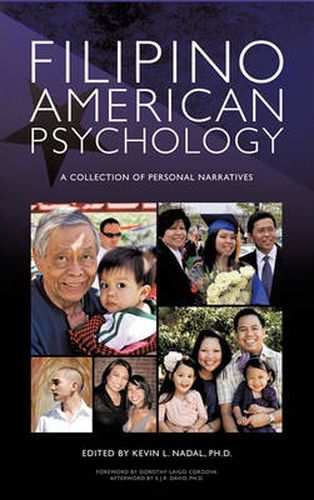Readings Newsletter
Become a Readings Member to make your shopping experience even easier.
Sign in or sign up for free!
You’re not far away from qualifying for FREE standard shipping within Australia
You’ve qualified for FREE standard shipping within Australia
The cart is loading…






This title is printed to order. This book may have been self-published. If so, we cannot guarantee the quality of the content. In the main most books will have gone through the editing process however some may not. We therefore suggest that you be aware of this before ordering this book. If in doubt check either the author or publisher’s details as we are unable to accept any returns unless they are faulty. Please contact us if you have any questions.
Filipino Americans are projected to become the largest Asian American population by 2010. As the second largest immigrant group in the country, there are approximately 3 million documented and undocumented Filipino Americans in the US. Filipino Americans are unique in many ways. They are descendants of the Philippines, a country that was colonized by Spain for over three centuries and by the US for almost 50 years. They are the only ethnic group that has been categorized as Asian American, Pacific Islander, Hispanic, and even as their own separate ethnicity. Because of diverse phenotypes, they are often perceived as being Asian, Latino, multiracial, and others. And contrary to the Model Minority Myth, Filipino Americans have experienced several health, psychological, and educational disparities, including lower college graduation rates and higher levels of cardiovascular disease, diabetes, obesity, teen pregnancy, HIV/AIDS, substance abuse, depression, and suicide. Despite these disparaging statistics, Filipino Americans have made significant contributions to the US, ever since their first arrivals in October 1587- from their involvement in the United Farmworkers Movement to their roles in hip-hop culture and their presence in medicine, education, and the arts. However, Filipino Americans have also been referred to as the “Forgotten Asian Americans” because of their invisibility in mainstream media, academia, and politics. Filipino American Psychology: A Collection of Personal Narratives offers an intimate look at the lives of Filipino Americans through stories involving ethnic identity, colonial mentality, cultural conflicts, and experiences with gender, sexual orientation, and multiraciality. Writers courageously address how they cope with mental health issues- including depression, anxiety, post-traumatic stress, and suicide. Theories and concepts from the book’s predecessor, Filipino American Psychology: A Handbook of Theory, Research, and Clinical Practice can be applied through the voices of a diverse collection of Filipino Americans. Filipino American Psychology: A Collection of Personal Narratives
$9.00 standard shipping within Australia
FREE standard shipping within Australia for orders over $100.00
Express & International shipping calculated at checkout
This title is printed to order. This book may have been self-published. If so, we cannot guarantee the quality of the content. In the main most books will have gone through the editing process however some may not. We therefore suggest that you be aware of this before ordering this book. If in doubt check either the author or publisher’s details as we are unable to accept any returns unless they are faulty. Please contact us if you have any questions.
Filipino Americans are projected to become the largest Asian American population by 2010. As the second largest immigrant group in the country, there are approximately 3 million documented and undocumented Filipino Americans in the US. Filipino Americans are unique in many ways. They are descendants of the Philippines, a country that was colonized by Spain for over three centuries and by the US for almost 50 years. They are the only ethnic group that has been categorized as Asian American, Pacific Islander, Hispanic, and even as their own separate ethnicity. Because of diverse phenotypes, they are often perceived as being Asian, Latino, multiracial, and others. And contrary to the Model Minority Myth, Filipino Americans have experienced several health, psychological, and educational disparities, including lower college graduation rates and higher levels of cardiovascular disease, diabetes, obesity, teen pregnancy, HIV/AIDS, substance abuse, depression, and suicide. Despite these disparaging statistics, Filipino Americans have made significant contributions to the US, ever since their first arrivals in October 1587- from their involvement in the United Farmworkers Movement to their roles in hip-hop culture and their presence in medicine, education, and the arts. However, Filipino Americans have also been referred to as the “Forgotten Asian Americans” because of their invisibility in mainstream media, academia, and politics. Filipino American Psychology: A Collection of Personal Narratives offers an intimate look at the lives of Filipino Americans through stories involving ethnic identity, colonial mentality, cultural conflicts, and experiences with gender, sexual orientation, and multiraciality. Writers courageously address how they cope with mental health issues- including depression, anxiety, post-traumatic stress, and suicide. Theories and concepts from the book’s predecessor, Filipino American Psychology: A Handbook of Theory, Research, and Clinical Practice can be applied through the voices of a diverse collection of Filipino Americans. Filipino American Psychology: A Collection of Personal Narratives